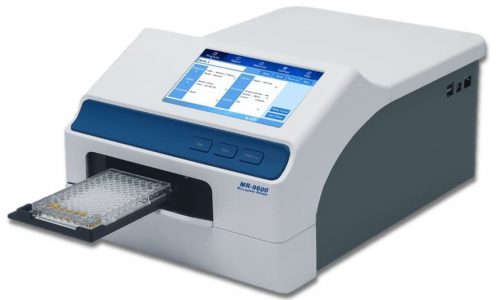Project Report For Microplate Readers
Introduction
Project Report For Microplate Readers is as follows.
The detection and analysis of diverse biological and chemical materials is done in laboratories using microplate readers. These devices are made for measuring the quantity of light absorbed or emitted by samples in microplates.
There are several uses for microplate readers in research, clinical diagnostics, and drug discovery, including enzyme assays, protein quantification, cell viability tests, and drug screening.
The quantity of various biological and chemical tests in a microplate is measured using a microplate reader. Today, a wide range of reagent kits are readily available, allowing the use of a microplate reader in a variety of industries and for a wide range of purposes. In addition to biological, cellular, biochemical, pharmaceutical, and drug discovery research, plate readers are employed in the food and cosmetics industries as well as academic and commercial settings for drug discovery and environmental research.
When samples are pipetted into a plate, a microplate reader picks up light signals that fall within a certain wavelength range. These samples’ optical qualities are the outcome of a biological, chemical, biochemical, or physical process. Different analytical processes lead to various optical modifications that are employed for analysis.
The most common and often utilised detected modes in laboratories across the world are absorbance, fluorescence intensity, and luminescence. On microplate readers, sophisticated modes including fluorescence polarisation, time-resolved fluorescence, and AlphaScreen are also accessible.

Types Of Microplate Readers
Absorbance :- Absorbance detection in microplate readers has been available for more than three decades and is utilised for experiments such as ELISA, protein and nucleic acid quantification, and enzyme activity assays. A light source illuminates the sample at a specific wavelength (chosen by an optical filter, or monochromator), and a light detector on the other side of the well measures how much of the initial (100%) light is transmitted through the sample:
The amount of transmitted light is typically related to the concentration of the molecule of interest. Several standard colorimetric analyses have been miniaturised to work quantitatively in a plate reader with research-grade performance.
Fluorescence :- Microplate fluorescence intensity detection has advanced dramatically. The variety of applications is significantly greater than with absorbance detection, but the apparatus is generally more costly. A first optical system (excitation system) lights the sample with a certain wavelength (chosen by an optical filter or a monochromator) with this form of apparatus. As a result of the illumination, the sample emits light (fluoresces), and a second optical system (emission system) collects the emitted light, separates it from the excitation light (via a filter or monochromator system), and measures the signal using a light detector such as a photomultiplier tube (PMT).
Luminescence :- A chemical or biological process produces luminescence. Because luminescence does not require a light source for excitation or optics to pick distinct excitation wavelengths, it is easier to detect visually than fluorescence. A light-tight reading chamber and a PMT detector are common components of a luminescence optical system. Some plate readers employ an analogue PMT detector, whilst others employ a photon counting PMT detector.
The most sensitive method of measuring luminescence is commonly acknowledged as photon counting. For selecting certain luminous wavelengths, some plate readers provide filter wheels or adjustable wavelength monochromator optical systems. The capacity to select numerous wavelengths, or even wavelength ranges, enables detection of tests using various luminous reporter enzymes, as well as the invention of novel luminescence assays.
Project Report Sample On
Microplate Readers
Get Completely Custom Bankable Project Report
Market Potential of Microplate Readers
The market for microplate readers was predicted to be worth USD 452.6 million in 2022 and is anticipated to grow at a CAGR of 7.59% from 2023 to 2030.
The use of microplate readers is being driven by the growth of the biotechnology sector and the expanding spectrum of applications in drug development, genomics study, and proteomics. The biotechnological and pharmaceutical sectors frequently employ microplate readers for research, quality assurance, bioassay validation, drug development, and manufacturing procedures.
Due to increased funding for research and technology, the biotechnology market segment is expanding. The market may also be divided based on technology, which includes protein engineering, microfluidics, biologic targeting, nanotechnology, and supramolecular chemistry.
Fully automated lab solutions will be one of the key drivers of market expansion and have a number of advantages. As physical labor-intensive jobs are replaced, this results in cost savings and time savings. As a consequence, end users including laboratories, hospitals, physicians, organisations, and patients receive efficient results. Automated systems gather incremental data throughout the working process, leading to ongoing advancements.

